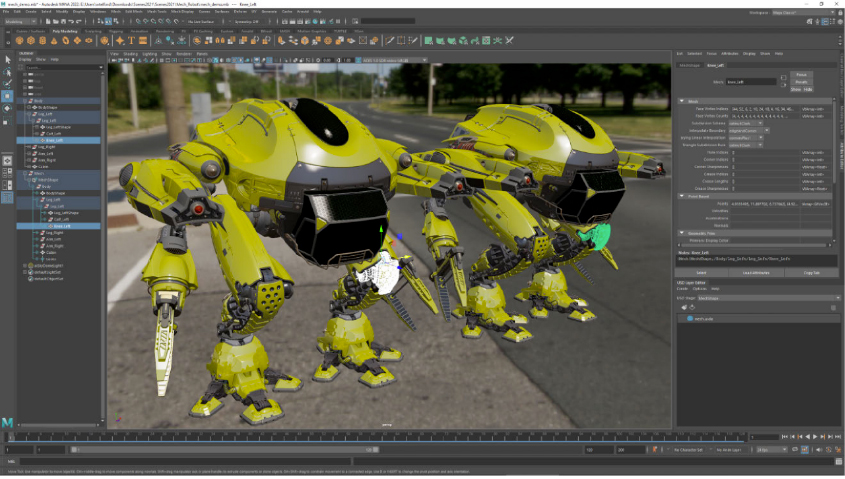


Serial mode is a troubleshooting mode to pinpoint the source of evaluation errors.Įvaluation Manager Parallel mode. Uses the EG but limits scheduling to a single core. This was the default evaluation mode prior to Maya 2016Įvaluation Manager Serial mode. Uses the legacy Dependency Graph-based evaluation of your scene. Starting in Maya 2016, 3 evaluation modes are supported: Mode One example of this is the GPU override, which uses your graphics card’s graphics processing unit (GPU) to accelerate deformations. However, the EM also provides the ability to override evaluation for sub-sections of the EG, using custom evaluators that target computation to specific runtimes and/or hardware. As with previous versions of Maya, you should avoid creating scenes with attribute-level cycles as this is unsupported and leads to unspecified behavior.īy default, the EM schedules node evaluation on available CPU resources. Multiple clusters may be evaluated at the same time. At scene evaluation time, nodes in clusters are evaluated serially before continuing with other parallel parts of the EG. If this is the case, the EM creates node clusters. Consider removing getAttr from expressions and/or using utility nodes.ĭepending on your scene, the EG may contain circular node-level dependencies. Expression nodes also reduce the amount of parallelism in your scenes (see Scheduling Types for details). If your scene contains expression nodes, that use getAttr, the DG graph will be missing explicit dependencies. Specifically, when EG nodes have no dependents, it is possible to immediately initiate additional processing (e.g., rendering) since we are guaranteed that no downstream nodes require computed results. This further enables pipelining of some operations. Because the EG encodes node-level dependencies, when evaluating a given EG node, you are guaranteed that inputs from dependent nodes have already been calculated. With dirty propagation disabled, computing a given scene frame involves walking the EG, scheduling EG nodes, and evaluating them. Unlike previous versions of Maya, that propagated dirty on every frame, Maya now disables dirty propagation once the EG exists, reusing the EG until it becomes invalid. Dirty propagation is the process of walking through the DG, from animation curves to renderable objects, and marking DG node attributes as requiring evaluation (i.e., dirty). Maya uses the DG’s dirty propagation mechanism to build the EG. For example, you may have loaded a new scene and no EG may have been built yet, or you may have changed your scene, invalidating a prior EG. A valid EG may not exist or become invalid for various reasons. EG connections represent node-level dependencies destination nodes employ data from source nodes to correctly evaluate the scene. The EG is a simplified version of the Dependency Graph (DG), consisting of DG nodes and connections.

Prior to evaluating your scene, the EM checks if a valid EG graph exists. The EM schedules EG nodes across available compute resources. For now, let’s focus on understanding key Maya evaluation concepts.Īt the heart of Maya’s new evaluation architecture is an Evaluation Manager (EM), responsible for creating a parallel-friendly description of your scene, called the Evaluation Graph (EG). As you can imagine, the amount of parallelism depends on how your scene has been constructed. Similarly, if your scene has a single complex character, it may be possible to evaluate rig sub-sections simultaneously. For example, if your scene contains different characters that are unconstrained to one another, Maya can evaluates each character at the same time. Unlike previous versions of Maya, which was limited to node-level parallelisms, Maya now includes a mechanism for scene-level analysis and parallelization. Starting from Maya 2016, Maya accelerates existing scenes by taking better advantage of your hardware. If you would like an overview of related topics prior to reading this document, check out Supercharged Animation Performance in Maya 2016. This guide will be of interest to riggers, TDs, and plug-in authors wishing to take advantage of speed enhancements in Maya. It covers key concepts, shares best practices/usage tips, and lists known limitations that we will aim to address in subsequent versions of Maya. This guide describes the Maya features for accelerating playback and manipulation of animated scenes.


 0 kommentar(er)
0 kommentar(er)
